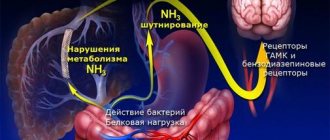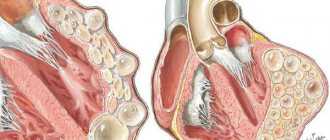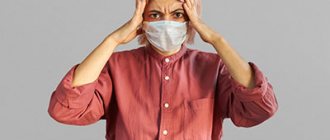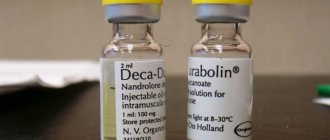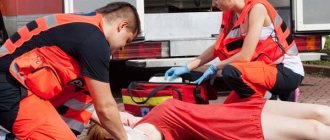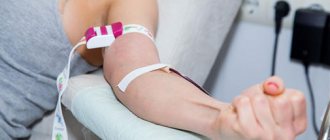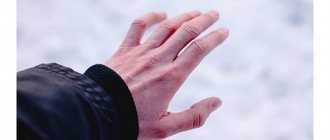UZ "Mogilev City Emergency Hospital"
1. What is Warfarin?
Warfarin belongs to a class of drugs known as anticoagulants. They reduce the blood's ability to form clots in blood vessels. For warfarin to help you, it must be taken correctly, with all the necessary precautions, and strictly following the instructions and advice of your doctor.
It is very important that you understand why you are taking this medicine and follow all your doctor's instructions.
The body functions normally if blood circulates freely through the vessels. Blood clots that interfere with its normal flow are called thrombi. Warfarin slows down the formation of blood clots. Blood clots can form anywhere in the body. During normal operation of the blood coagulation system, only when a blood vessel is damaged, a small clot forms, which stops the bleeding. But if blood clots form spontaneously in the bloodstream, this means that something has gone wrong in the coagulation system. The formation of blood clots is called thrombosis or thromboembolism.
Types of diseases.
This table shows where blood clots form and
| Thrombophlebitis | Blood clots in veins |
| Embolism | Blood clots moving through blood vessels |
| Venous thrombosis | Blood clots in the legs |
| Pulmonary embolism | Blood clots in the lungs |
| Stroke | Blood clots in the arteries of the brain |
| Atrial fibrillation | Irregular heartbeat, arrhythmia |
| Myocardial infarction | Blood clots in the arteries of the heart |
| Heart failure | Blood clots in the chambers of the heart |
2. Rules for taking warfarin.
- Take warfarin in the dose prescribed by your doctor at the same time. Do not double the dose if you miss a dose, as the risk of bleeding may increase.
- Warfarin is taken according to a specific regimen, selected individually for each patient by a doctor (daily, every other day, or according to another regimen).
You cannot change the order of taking Warfarin on your own.
- Follow the frequency of blood tests for INR recommended by your doctor to monitor the state of blood clotting. After each test, visit your doctor or contact him by phone.
- Use a Warfarin diary and write down each dose of the drug. The form for such a diary is located at the end of this brochure. In a notebook or notebook according to the proposed form, draw the corresponding columns. Show your diary at every doctor's visit.
- Store Warfarin in a cool, dark place and keep out of the reach of children.
- Do not store the medicine in the bathroom, near the kitchen sink, or other damp places. Warfarin can be spoiled by heat and moisture.
- Do not keep the medicine if it is expired or if you no longer take it.
3. WARNINGS.
3.1. Signs of a Warfarin overdose.
If you take Warfarin incorrectly or change your lifestyle, diet, or take other medications, signs of side effects or Warfarin overdose may appear.
If you have:
- bleeding gums when brushing teeth
- unexplained nosebleeds or bruising of the skin
- heavy bleeding from cuts, wounds, menstruation
- blood in urine or black (bloody) stool
- hemoptysis
- severe or prolonged pain
- joint pain, swelling or lumps
- bloody or dark-colored vomit
You need to see a doctor immediately.
3.2. Mode
Avoid vigorous sports, heavy lifting, or other activities that could cause falls or injuries.
Visiting the bathhouse (steam room), manual massage, Charcot shower is not recommended.
Eliminate alcohol, snacks and condiments containing vinegar from your diet.
Avoid exposure to the sun. Swimming in the pool, warm pearl baths, and terrincourt are allowed.
3.3 Be sure to tell your dentist, gynecologist and other doctors, especially if you are undergoing surgery, that you are taking Warfarin.
Some medicines can change (strengthen or weaken) the anticoagulant effect of Warfarin: this includes drugs that
that you buy without a prescription, including aspirin or headache medications, including fever reducers.
Do not take any of the following medications without consulting your doctor.
Medicines that enhance the activity of Warfarin:
- preparations containing aspirin (askofen, citramon, askaf, cardiomagnyl, etc.)
- medications used for arthritis, arthrosis: ibuprofen, indomethacin, naproxen, diclofenac, diclobern, voltaren, xefocam, ketorolac, etc.
- In addition, the following can enhance the anicoagulant effect of Warfarin: glibenclamide, thyroxine, ticlopidine.
Medicines that reduce the activity of Warfarin:
Barbiturates, antihistamines, haloperidol, oral contraceptives, antacids.
Therefore, do not take new or stop taking existing medications without talking to your doctor.
3.4 Diet
Always eat a balanced diet. Vitamin K, found in many foods, reduces the effect of Warfarin, and any changes in your daily diet may change the amount of this vitamin. It is best to keep the amount of vitamin K you receive constant. When you are taking Warfarin, it is especially important not to significantly change the amount of these foods in your daily diet.
A sufficient daily dose of vitamin K is 70-140 mg. If the patient eats large amounts of food high in vitamin K, this food will weaken the effect of Warfarin. A diet with a constant allowed amount of foods containing vitamin K is recommended.
Vitamin K content in the product
| Products | Vitamin K (mg/100g) | Vitamin K content |
| FRUITS | ||
| Applesauce | 2 | Low |
| Banana | 2 | Low |
| Orange | 1 | Low |
| Peach | 8 | Low |
| Raisin | 6 | Low |
| Strawberry | 10 | Low |
| FATS | ||
| Soybean oil | 193 | High |
| Corn oil | 3 | Low |
| Chicken eggs | 11 | Low |
| MEAT AND MEAT PRODUCTS | ||
| Beef liver | 92 | High |
| Bacon | 46 | Average |
| Chicken liver | 7 | Low |
| Ground beef | 7 | Low |
| Ham | 15 | Low |
| Pork liver | 25 | Low |
| Pork fillet | 11 | Low |
| MILK AND DAIRY PRODUCTS | ||
| Oil | 30 | Average |
| Cheese | 35 | Average |
| Cow's milk | 1 | Low |
| GREATS AND CEREALS | ||
| Bread | 4 | Low |
| Corn | 5 | Low |
| Oatmeal | 10 | Low |
| Rice | 3 | Low |
| Wheat flour | 4 | Low |
| Whole wheat grains | 17 | Low |
| BEVERAGES | ||
| Green tea | 712 | High |
| Coffee | 38 | Average |
| Black tea | — | Low |
| Cola | 2 | Low |
| VEGETABLES | ||
| Turnip greens | 650 | High |
| Spinach | 415 | High |
| Broccoli | 175 | High |
| Brussels sprouts | From 800 to 3000 | High |
| Cabbage | 125 | High |
| Cauliflower | 191 | High |
| Salad | 129 | High |
| Asparagus | 57 | Average |
| Green peas | 29 | Average |
| Green beans | 40 | Average |
| Watercress | 80 | Average |
| Tomatoes | 10 | Low |
| Pumpkin | 2 | Low |
| Potato | 1 | Low |
Authorized Products
The diet when taking Warfarin includes:
- Lean dietary meat (without skin) turkey, chicken, rabbit, lean beef, beef liver.
- Various types of sea/river fish (mackerel, herring, hake, mackerel, salmon, sturgeon, sardines, pike, carp, perch), seafood (shrimp, crabs, mussels, oysters, squid), fish oil and various types of seaweed.
- Virgin vegetable oils (olive, cottonseed, corn, sunflower) and other products containing unsaturated fatty acids - nuts, flax seeds, dried fruits, seeds.
- Cereals in various forms (bread, porridge, sprouted grains of wheat, rye, whole grain bread).
- Fermented milk/low-fat dairy products (cottage cheese, kefir, acidophilus milk, natural yogurt).
- Various types of vegetables/fruits that do not contain much vitamin K - bell peppers, zucchini, jacket potatoes, carrots, tomatoes, onions, sauerkraut, citrus fruits, apples, cherries, apricots, strawberries, black currants, gooseberries, which are allowed to be consumed in various forms.
- To drink - rosehip decoction, herbal teas, still mineral water, freshly squeezed juices from permitted vegetables/fruits, weak black tea, jelly, compote.
Table of permitted products
| Proteins, g | Fats, g | Carbohydrates, g | Calories, kcal | |
Vegetables and greens | ||||
| boiled cauliflower | 1,8 | 0,3 | 4,0 | 29 |
| boiled potatoes | 2,0 | 0,4 | 16,7 | 82 |
| canned grape leaves | 4,3 | 2,0 | 11,7 | 69 |
| carrot | 1,3 | 0,1 | 6,9 | 32 |
| cucumbers | 0,8 | 0,1 | 2,8 | 15 |
| salad pepper | 1,3 | 0,0 | 5,3 | 27 |
| boiled beets | 1,8 | 0,0 | 10,8 | 49 |
| tomatoes | 0,6 | 0,2 | 4,2 | 20 |
| dill | 2,5 | 0,5 | 6,3 | 38 |
| garlic | 6,5 | 0,5 | 29,9 | 143 |
Fruits | ||||
| apricots | 0,9 | 0,1 | 10,8 | 41 |
| oranges | 0,9 | 0,2 | 8,1 | 36 |
| cherry | 0,8 | 0,5 | 11,3 | 52 |
| grapefruit | 0,7 | 0,2 | 6,5 | 29 |
Berries | ||||
| cranberry | 0,5 | 0,0 | 6,8 | 26 |
| gooseberry | 0,7 | 0,2 | 12,0 | 43 |
| Rowan | 1,5 | 0,1 | 10,9 | 50 |
| rose hip | 1,6 | 0,0 | 14,0 | 51 |
Nuts and dried fruits | ||||
| sesame | 19,4 | 48,7 | 12,2 | 565 |
| dried apricots | 5,2 | 0,3 | 51,0 | 215 |
| prunes | 2,3 | 0,7 | 57,5 | 231 |
Cereals and porridges | ||||
| buckwheat (kernel) | 12,6 | 3,3 | 62,1 | 313 |
| cereals | 11,9 | 7,2 | 69,3 | 366 |
| Wheat groats | 11,5 | 1,3 | 62,0 | 316 |
| wheat bran | 15,1 | 3,8 | 53,6 | 296 |
Bakery products | ||||
| whole grain bread | 10,1 | 2,3 | 57,1 | 295 |
Confectionery | ||||
| jam | 0,3 | 0,1 | 56,0 | 238 |
Raw materials and seasonings | ||||
| honey | 0,8 | 0,0 | 81,5 | 329 |
Dairy | ||||
| kefir 3.2% | 2,8 | 3,2 | 4,1 | 56 |
| sour cream 15% (low fat) | 2,6 | 15,0 | 3,0 | 158 |
Cheeses and cottage cheese | ||||
| cottage cheese | 17,2 | 5,0 | 1,8 | 121 |
Meat products | ||||
| lean pork | 16,4 | 27,8 | 0,0 | 316 |
| beef | 18,9 | 19,4 | 0,0 | 187 |
| beef liver | 17,4 | 3,1 | 0,0 | 98 |
| calf liver | 19,2 | 3,3 | 4,1 | 124 |
| mutton | 15,6 | 16,3 | 0,0 | 209 |
| rabbit | 21,0 | 8,0 | 0,0 | 156 |
| beef stew | 14,1 | 17,4 | 0,0 | 214 |
Bird | ||||
| chicken liver | 20,4 | 5,9 | 1,4 | 140 |
| turkey | 19,2 | 0,7 | 0,0 | 84 |
| turkey liver | 19,5 | 22,0 | 0,0 | 276 |
| goose liver | 15,2 | 39,0 | 0,0 | 412 |
Eggs | ||||
| chicken eggs | 12,7 | 10,9 | 0,7 | 157 |
Fish and seafood | ||||
| brown algae | 1,7 | 0,6 | 8,3 | 43 |
| pink salmon | 20,5 | 6,5 | 0,0 | 142 |
| Red caviar | 32,0 | 15,0 | 0,0 | 263 |
| cod roe | 24,0 | 0,2 | 0,0 | 115 |
| pike caviar | 17,3 | 2,0 | 0,0 | 87 |
| squid | 21,2 | 2,8 | 2,0 | 122 |
| shrimps | 22,0 | 1,0 | 0,0 | 97 |
| salmon | 19,8 | 6,3 | 0,0 | 142 |
| mussels | 9,1 | 1,5 | 0,0 | 50 |
| seaweed | 0,8 | 5,1 | 0,0 | 49 |
| herring | 16,3 | 10,7 | — | 161 |
| cod (liver in oil) | 4,2 | 65,7 | 1,2 | 613 |
| trout | 19,2 | 2,1 | — | 97 |
Oils and fats | ||||
| vegetable oil | 0,0 | 99,0 | 0,0 | 899 |
| butter | 0,5 | 82,5 | 0,8 | 748 |
| olive oil | 0,0 | 99,8 | 0,0 | 898 |
| * data is per 100 g of product | ||||
Diet preparation according to the INR indicator
If the menu contains a large number of foods rich in vit. K, in this case, the INR will decrease significantly, but the likelihood of thrombosis will increase. If the consumption of food containing vit. K, it will be possible to increase the INR, but hemorrhage is possible.
It will be possible to lower the INR by including in the menu:
- Asparagus, peas, greens (spinach, green onions, coriander)
- Liver
- Tea (both black and green)
- Mayonnaise
- Fish oil, as well as vit. E
- Green apples
- Vegetable oil (olive, rapeseed or soybean)
- Ogurtsov
- Blueberries
It is important to remember that some foods may increase the likelihood of bleeding due to insufficient vitamin content. TO:
- Ginseng root
- Spices (ginger and anise)
- Garlic
- Arnica fruit
- Burdock
- Angelica officinalis
- Wort.
The diet when taking Warfarin must be strictly followed until completion of treatment; further diet must be agreed with the attending physician.
What to exclude from the menu
In case of atrial fibrillation, alcohol, soft drinks and carbonated drinks are prohibited, as such products significantly increase the likelihood of developing side symptoms. During treatment with Warfarin, you should avoid drinking coffee, sour cream and cream. You must also refrain from:
- Flour (white bread, various pastries)
- Cheese
- Sausages
- Legumes
- chocolate
- Pickled, salted and pickled vegetables
- Pates
- Gribov.
You should also not eat sour apples and citrus fruits. It is necessary to limit salt intake.
A prerequisite is to give up bad habits (drinking alcohol and smoking). Daily walks in the fresh air and simple physical exercises are necessary.
It must be remembered that making the correct diagnosis and carrying out appropriate treatment in compliance with all the features of health therapy will allow you to quickly achieve the expected therapeutic effect.
Source: https://lekhar.ru/lekarstva/preparaty-dlya-krovi/dieta-pri-prijome-varfarina/
Advantages and disadvantages
First of all, people on a diet suffer from the fact that they cannot eat their previously favorite foods. You can eat well, getting the necessary vitamins and minerals without losing your sense of taste.
The advantages are obvious:
- The patient loses weight and will meet physical and physiological parameters.
- With prolonged normalized nutrition, it is possible that dormant or suppressed physiological processes necessary for a person will be launched and the body’s healing will begin.
- Food prices are not so high, since food products that are expensive to prepare and cost are disappearing from the diet.
- Due to the fashionable trend towards healthy eating that has appeared in recent years, the circle of acquaintances and communication may expand. PP-nicks often unite in groups to share time, training and interests with the obligatory observance of a healthy lifestyle.
- the temporary duration of food restriction, depending on the duration of use of the medicine;
- systematic monitoring of INR.
Issues related to health and medication should be discussed with your doctor, who will select individual and optimal treatment options. The specialist will also advise what you can eat while taking Warfarin.
The drug Warfarin belongs to the group of anticoagulants - drugs that reduce the ability of blood to clot and slow down the process of thrombus formation. The discovery of Warfarin occurred in the 30s of the last century while identifying the causes of the mass death of cattle due to internal bleeding.
In the first years, the drug was used as rat poison. But since 1950, this remedy was patented and began to be widely used as a medicine. Among the manufacturers of the drug is the company Nycomed.
Use (effect) of warfarin, dose, overdose
The body needs vitamin K to ensure blood clotting.
A person gets vitamin K from food, mainly from vegetables. Vitamin K can also be produced in the human intestine by special intestinal bacteria. From the intestines, vitamin K is absorbed into the blood and goes to the liver, the “laboratory” of the body. In the liver, with the participation of vitamin K, blood clotting factors necessary for the formation of a blood clot (thrombus) are synthesized. These are prothrombin (factor II), factors VII, IX and X. They are called “vitamin K-dependent factors”.
The action of warfarin is to reduce the formation of vitamin K-dependent factors. As long as warfarin is regularly injected into your body, your blood's clotting time is prolonged and this prevents blood clots from forming. There is also a risk of bleeding if the dose of the drug is excessive.
The effect of warfarin on blood clotting varies from person to person.
Therefore, each patient receives his own, individually selected dose. To achieve the desired effect, a minimum of 4-5 days is required, often dose selection lasts up to 2-3 weeks. Prescription of the drug and further monitoring are carried out using the determination of INR. The daily dose of warfarin is taken orally once a day, in the evening (at 18.00-19.00 hours); if necessary, the tablet or part of it can be chewed and washed down with water.
What should you tell your doctor about if you start taking warfarin or are already being treated with it?
About all problems associated with bleeding or its risk (stomach or duodenal ulcers, colon; hemorrhoidal bleeding; heavy menstruation), liver and kidney diseases, high blood pressure and diabetes. Very important if you are planning a pregnancy or are already pregnant. Warfarin has a teratogenic effect. This means that taking it can lead to various deformities in the fetus (if taken in the first trimester of pregnancy) or to intrauterine bleeding (in later stages). Therefore, women whose pregnancy occurred while taking warfarin are recommended to terminate it.
Prohibited list
While taking Warfarin, excessive consumption of certain foods and foods may be detrimental to the patient's health.
The list of foods that are recommended to be eliminated from the diet or to minimize their consumption includes:
- High-calorie baked goods with a high sugar content: cakes, butter cookies, puff pastries, as well as bread made from premium flour.
- Canned foods, marinades, pickles.
- Sausages: ham, sausages, fatty kupaty, sausage, both boiled and smoked, half-smoked, raw smoked.
- Chocolate candies.
- Almost all types of cheese, except ricotta (it has low fat content).
- All types of fast food.
- Many varieties of greens: radishes, sorrel, onions, garlic.
- Seaweed, white cabbage.
- Citrus fruits, green unsweetened apples with a high acid content. However, the ban on green apples can be lifted if they are consumed peeled from the hard, tart peel.
- Meat, fish, poultry with a high fat content.
- Excessively fatty dairy and fermented milk products.
- Strong coffee, dark chocolate.
- Cranberries are prohibited both in their natural form and in the form of tinctures and fruit drinks!
Fully or partially limited products
The diet when taking Warfarin involves the exclusion of:
- Concentrated meat/fish and mushroom broths.
- Fatty varieties of red meat, smoked sausages, goose and duck meat, canned meat and fish, mayonnaise, bacon, ham, animal/confectionery fat.
- Pickles, marinades, smoked meats, legumes, pasta, white bread, salty and fatty cheeses, baked goods, confectionery and especially with cream, chocolate, fried chicken eggs, fast food.
- Green tea, coffee, cocoa, alcohol-containing drinks.
- High-fat dairy products (cream, sour cream, cottage cheese, baked milk, yogurt with additives).
- Vegetables and fruits of dark green color (cabbage, amaranth greens, avocado, spinach, coriander leaves, cilantro, cucumber peel, parsley, kiwi fruits, lettuce, mint).
- Limit salt intake to 5-7 g/day and salty foods.
Table of prohibited products
| Proteins, g | Fats, g | Carbohydrates, g | Calories, kcal | |
Vegetables and greens | ||||
| canned vegetables | 1,5 | 0,2 | 5,5 | 30 |
Snacks | ||||
| potato chips | 5,5 | 30,0 | 53,0 | 520 |
Flour and pasta | ||||
| vareniki | 7,6 | 2,3 | 18,7 | 155 |
| dumplings | 11,9 | 12,4 | 29,0 | 275 |
Bakery products | ||||
| sliced loaf | 7,5 | 2,9 | 50,9 | 264 |
| buns | 7,9 | 9,4 | 55,5 | 339 |
Confectionery | ||||
| cookie | 7,5 | 11,8 | 74,9 | 417 |
| cake | 3,8 | 22,6 | 47,0 | 397 |
Cakes | ||||
| cake | 4,4 | 23,4 | 45,2 | 407 |
Chocolate | ||||
| chocolate | 5,4 | 35,3 | 56,5 | 544 |
Raw materials and seasonings | ||||
| mayonnaise | 2,4 | 67,0 | 3,9 | 627 |
Dairy | ||||
| milk | 3,2 | 3,6 | 4,8 | 64 |
| cream 35% (fat) | 2,5 | 35,0 | 3,0 | 337 |
| sour cream 30% | 2,4 | 30,0 | 3,1 | 294 |
Cheeses and cottage cheese | ||||
| cheese | 24,1 | 29,5 | 0,3 | 363 |
Meat products | ||||
| fried pork | 11,4 | 49,3 | 0,0 | 489 |
| fatty pork | 11,4 | 49,3 | 0,0 | 489 |
| pork fat | 1,4 | 92,8 | 0,0 | 841 |
| bacon | 23,0 | 45,0 | 0,0 | 500 |
Sausages | ||||
| smoked sausage | 28,2 | 27,5 | 0,0 | 360 |
| smoked sausage | 9,9 | 63,2 | 0,3 | 608 |
Bird | ||||
| duck | 16,5 | 61,2 | 0,0 | 346 |
| goose | 16,1 | 33,3 | 0,0 | 364 |
Fish and seafood | ||||
| fried fish | 19,5 | 11,7 | 6,2 | 206 |
Oils and fats | ||||
| cooking fat | 0,0 | 99,7 | 0,0 | 897 |
| rendered pork fat | 0,0 | 99,6 | 0,0 | 896 |
Alcoholic drinks | ||||
| white dessert wine 16% | 0,5 | 0,0 | 16,0 | 153 |
| vodka | 0,0 | 0,0 | 0,1 | 235 |
| cognac | 0,0 | 0,0 | 0,1 | 239 |
| liquor | 0,3 | 1,1 | 17,2 | 242 |
| beer | 0,3 | 0,0 | 4,6 | 42 |
Non-alcoholic drinks | ||||
| cola | 0,0 | 0,0 | 10,4 | 42 |
| coffee | 0,2 | 0,0 | 0,3 | 2 |
| Pepsi | 0,0 | 0,0 | 8,7 | 38 |
| black tea | 20,0 | 5,1 | 6,9 | 152 |
| energy drink | 0,0 | 0,0 | 11,3 | 45 |
| * data is per 100 g of product | ||||
